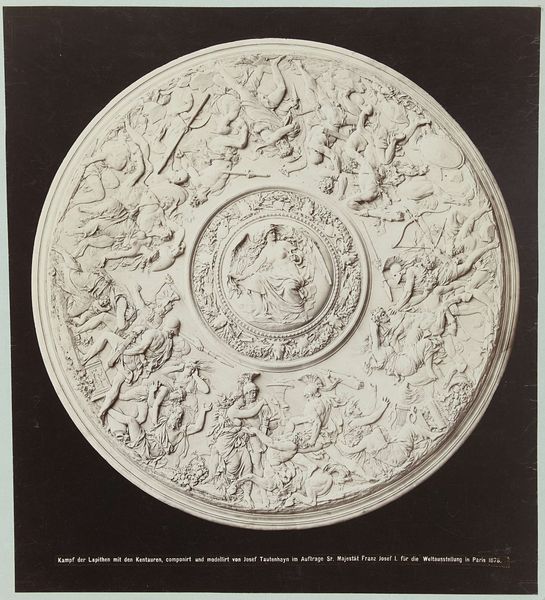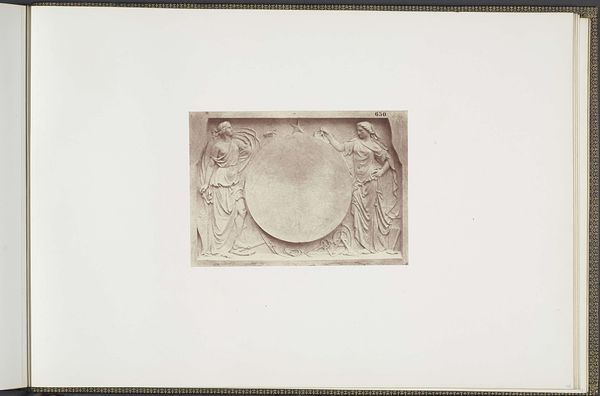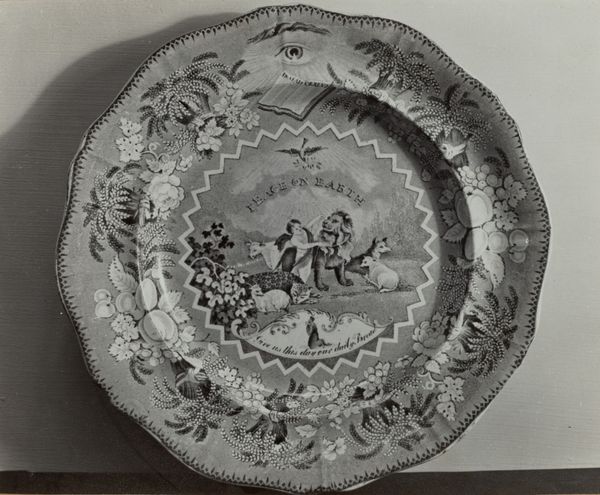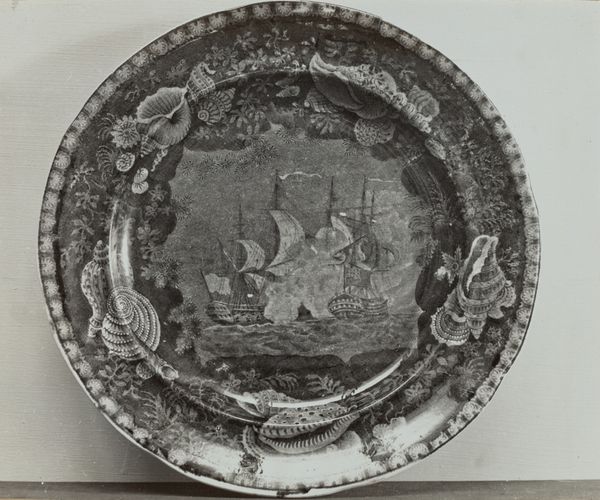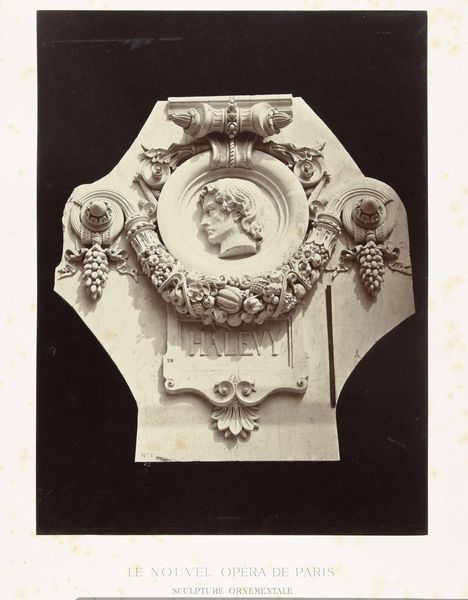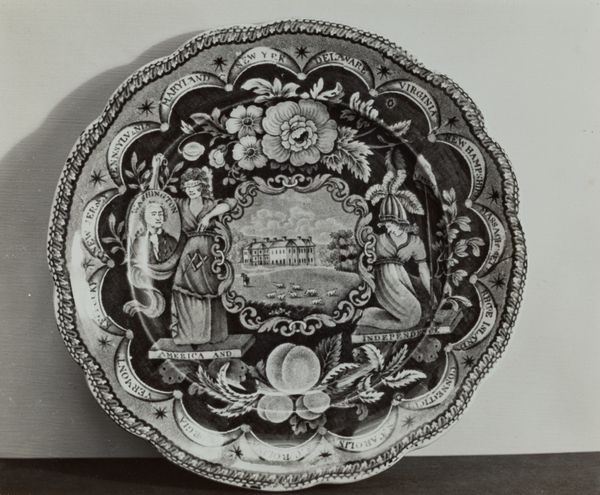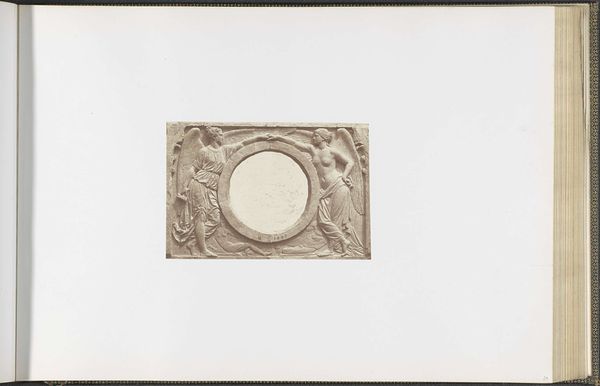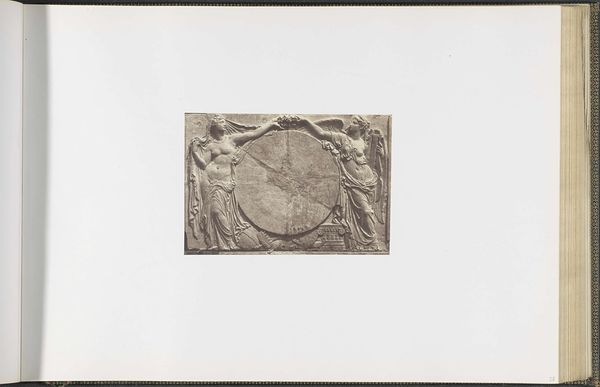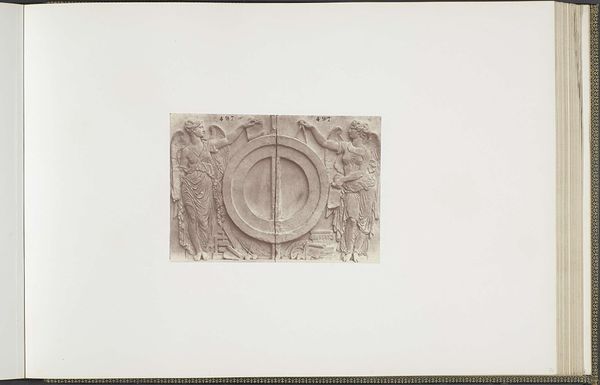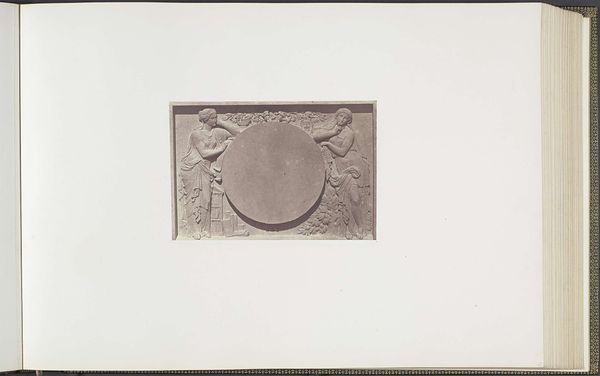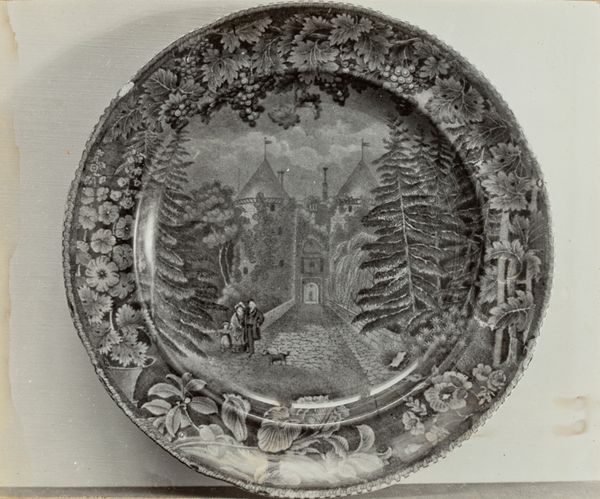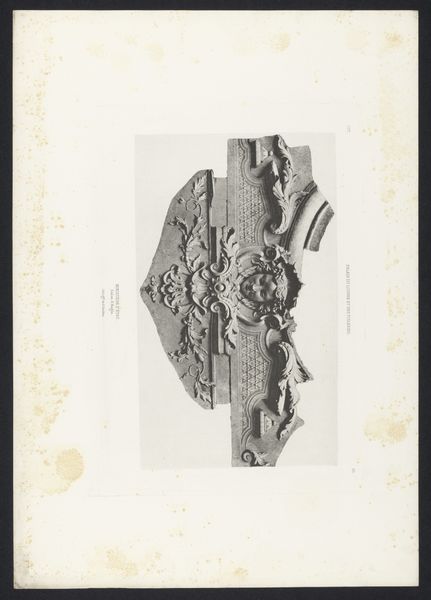
relief, ceramic, earthenware
#
decorative element
#
greek-and-roman-art
#
relief
#
ceramic
#
figuration
#
earthenware
#
ceramic
#
earthenware
#
history-painting
Dimensions: height 352 mm, width 310 mm
Copyright: Rijks Museum: Open Domain
This is a photograph of a plaster cast fruit bowl made by Josef Tautenhayn in Austria in the late 19th century, depicting the abduction and return of Persephone. This mythological scene, rendered here in neoclassical style, tells of Persephone’s capture by Hades, and her eventual return, which was negotiated by her mother Demeter. In the context of the Austro-Hungarian Empire, such imagery connected the Imperial court of Franz Josef I, who commissioned this piece, with a classical past, alluding to the wealth and power of the Habsburgs. The use of plaster casts also reflects an institutional history of art academies and museums, where casts of ancient sculptures were used as models for students and displayed as prized examples of Western art. To fully understand this work, we need to consider the social function of such objects. Art history research, including archival documents, exhibition catalogues, and studies of patronage, can help us better appreciate the cultural and political meanings embedded in this bowl.
Comments
No comments
Be the first to comment and join the conversation on the ultimate creative platform.
